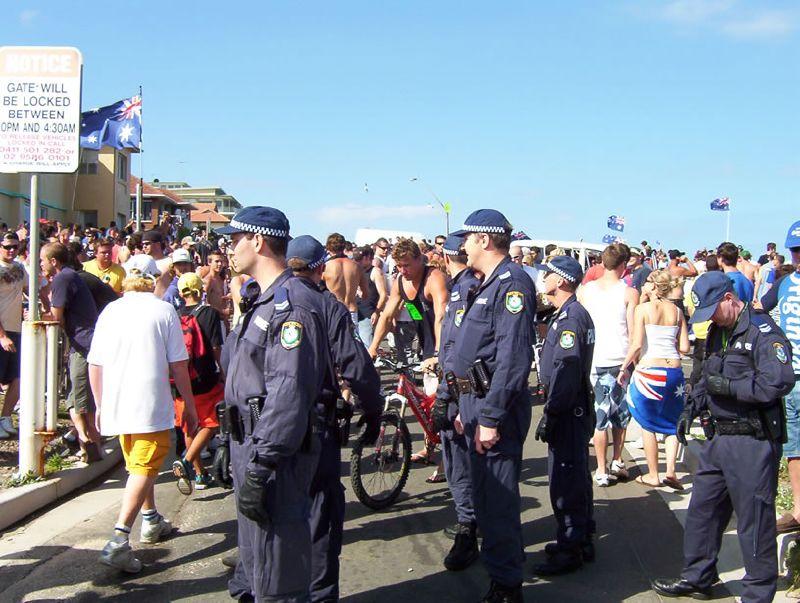
The modern wave of international right-wing terrorism began in the US and Western Europe in the 1970s, and in Eastern Europe in the early 1990s, following the collapse of the Soviet Union. Right-wing terrorists in the West aim to replace democratic governments with nationalist or fascist regimes, and in Eastern Europe with authoritarian regimes they can control from behind the scenes.
Although extreme right-wing groups often produce ‘manifestos’, they generally lack a specific ideology and embrace a range of ideologies and attitudes, including neo-Nazism, white nationalism, anti-Semitism, white supremacy, homophobia, neo-fascism and Islamophobia.
They espouse the view that the state must ‘rid itself of the foreign elements that undermine it from within’ so that the state can ‘provide for its rightful, natural citizens’. Characteristics of the extreme-right are the encouragement of opportunistic attacks on ethnic minorities, immigrants, Muslims, Jews, leftists and the LGBTI community.
Australia hasn’t been isolated from extreme-right violence. In 2005, during the Cronulla riots, it didn’t take long for right-wing extremists to encourage attacks against mainly Lebanese Muslim young men from the western suburbs of Sydney. They were enthusiastically supported by drunken bogans from Sydney’s southern beachside suburbs. At one stage around 5,000 people were involved.
The NSW government moved quickly to contain the situation, passing laws to give police new powers, including the ability to seize cars and mobile phones for up to seven days, close licensed premises, and prohibit alcohol from being brought into lock-down zones. A new offence of ‘assault during a public disorder’ was introduced and both ‘rioting’ and ‘affray’ had their minimum sentences increased.
The right-wing Party for Freedom planned to mark the 10th anniversary of the Cronulla riots with a rally on 12 December 2015. It was refused permission in the NSW Supreme Court ‘on the grounds it would stir up racial hatred’. In a separate case, the Federal Court ruled that no other person or groups could commemorate the anniversary.
In some countries, including Australia, far-right activists have attracted unspoken support from members of the mainstream population concerned about issues like city overcrowding, stress on the environment, competition for unskilled jobs, and the perceived threat of people from imported ‘alien’ cultures that don’t integrate with the rest of the population.
Right-wing politicians like Pauline Hanson and Fraser Anning have tapped into these popular concerns for political purposes, but in the process have probably generated recruits for extremist organisations.
Australian antipathy towards immigrants is not a new phenomenon—it seems to have followed each wave of immigration to the country. There doesn’t seem to have been a survey on Australian attitudes on immigration sources for some while, but in 2005 Monash University research showed significant public antipathy towards immigrants from the Middle East and Asia.
In 2018, the Lowy Institute reported a sharp spike in anti-immigration sentiment. For the first time in Lowy polling, a majority of Australians (54%) said the ‘total number of migrants coming to Australia each year’ was too high. That result appears to be related more to the volume of migrants than the source of migrants, although Lowy commented that ‘Australians also appear to be questioning the impact of immigration on the national identity.’
Andrew Markus from Monash University observed that far-right political groups have been ‘a constant feature on the fringes of Australian politics’.
In the 1950s and 1960s, they included the League of Rights and minuscule neo-Nazi parties. In the 1980s, there was National Action, the Australian Nationalist Movement, Australians Against Further Immigration and the Citizens Electoral Council.
In recent years, we have witnessed the emergence of a number of groups that combine online organisation with intimidating street activity: Reclaim Australia, Rise Up Australia, the Australian Defence League, the United Patriots Front, True Blue Crew and Antipodean Resistance.
In Australia, groups associated with the fringes of the right also include ‘pop-up’ white-power gangs, far-right hooligans and people who just want to engage in street fights.
While hostility between—and within—far-right groups is typical, they are united by nationalism, racism, violent opposition to ‘alien’ immigration and disdain for democracy. In Australia, they often take their lead from overseas groups with similar views, prominent among them being the UK’s National Action and Combat 18.
National Action is a neo-Nazi organisation formed in 2013. The group is secretive, and members are constrained from talking openly about the organisation. Since December 2016, it has been a proscribed organisation in the UK and is the first far-right group to be proscribed since the World War II. Since then it has gone underground and adopted a cellular structure to make it harder to penetrate.
Combat 18 is another neo-Nazi terrorist organisation, with ties to similar movements in the US. Combat 18 members have been suspected of being involved in deaths of immigrants, non-whites, and members suspected of being informants.
From a security intelligence perspective, a problem posed by extreme right-wing groups in Australia is that they are difficult to penetrate and aware of covert monitoring technologies and, from a law enforcement perspective, much of what they do is not illegal.
The major security concern is the hard-to-detect lone-actor who acts on his right-wing extremist views—as did Anders Behring Breivik, who killed 77 people in Norway in 2011, and Brenton Tarrant, who allegedly killed 50 in Christchurch last week.